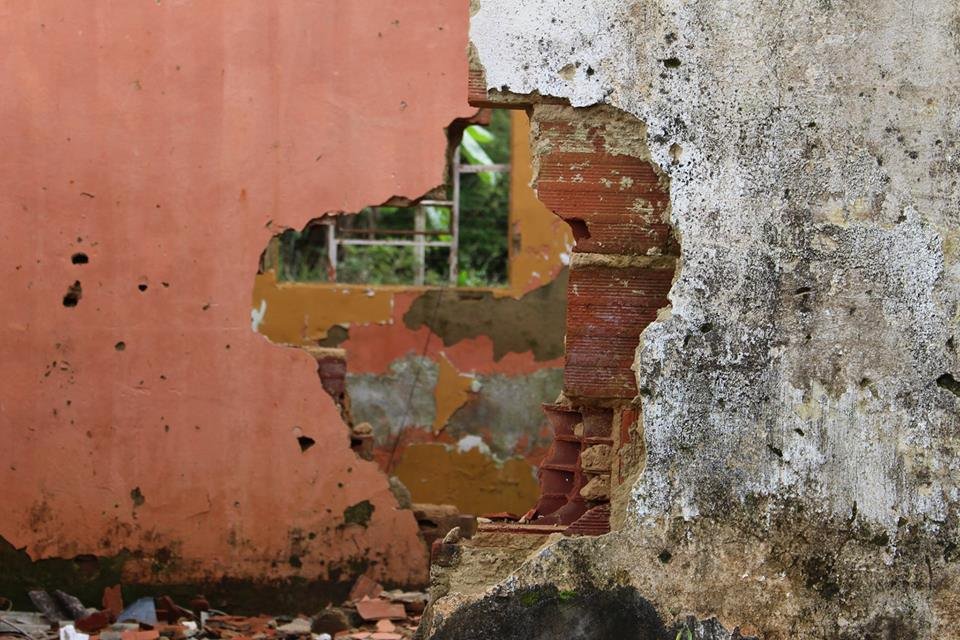
FICÇÕES RURAIS
Daniel Murgel, Fábio Baroli, Marcone Moreira, Marcos Antony
(artist residency at NACO - Núcleo de Arte do Centro-Oeste)
(catalog text)
HETEROTOPIA: invention and contravention in the artists’ production
Each slice of time that makes up the period of a residency emerges as a new spatial fabrication. The imagination about the region and the place enables the artist to present their version of what will be seen and lived during the time of sharing.
These rural fictions, operating in Olhos d’Àgua, a small village located in the heart of the country, in a little-known area—despite its historically, politically, and socially defined place—open cracks in the commonplace, revealing, through the artists’ productions (and their own, as subjects who occupy this other place), sums, subtractions, multiplications, and divisions of existing and new knowledge, reorganizing times and spatialities.
The productions, in this situation, align with a concept that became popular in 1984, with the publication of Michel Foucault's conference Des Espaces Autres (Other Spaces), which is that of “Heterotopia,” a type of ‘counter-space’ that exists in every culture; a kind of space that “has the curious property of being in relation to all other sites, but in such a way that it suspends, neutralizes, or inverts the set of relations that are designated, reflected, or thought by them.” Foucault continues: “(...) spaces of a type that are outside of all other spaces, even though we can indicate their location in reality. Because they are absolutely different from all the sites they reflect and refer to, I call them, in contrast to utopias, heterotopias.”
The synthesis image of heterotopia, the ship, parallels the image of the artist in residency, who leaves their place of origin for another, whether known or not, like Olhos d’Água, which is historically situated, but displaced in the prevailing order of the art establishment, for example. The ship is, for Foucault, the ultimate heterotopia: “(...) a floating piece of space, a place without a place, which lives by itself, which is closed upon itself and, at the same time, delivered to the infinite sea, and that, from port to port, from brothel to brothel, goes to the colonies to seek the most precious things in their gardens...”
The art residency, especially in a rural area, occupies an “out-of-focus” space for the trans-migrant artist.
Some possible issues for addressing heterotopias became more evident, such as the principle of crisis and deviation, heterochronies, and that of illusion and compensation. Each of these precepts aids in reading and interpreting the pieces that were composed and juxtaposed over time, transforming the NACO studio space into a great vessel, reconfigured as new events (arrivals and departures) arose and were absorbed and returned by the four participants to the space of sharing.
Below are images created at various moments throughout the process; a snapshot of times and spaces in transformation. The idea remains that working in residency is one of the possible paths for reflection to make sense, even (and perhaps because of) the zigzags and interferences along the way, which keep the artists, crew, and navigators in constant alert. Safe travels!
July/2016
*Excerpted from the text Des Espaces Autres, a conference presented at the Cercle d’études architecturales in March 1967 and published as Of Other Spaces: Utopias and Heterotopias in October, n. 5, Oct./1984, p. 46-49.


